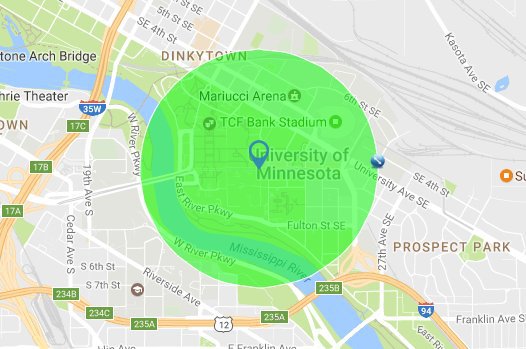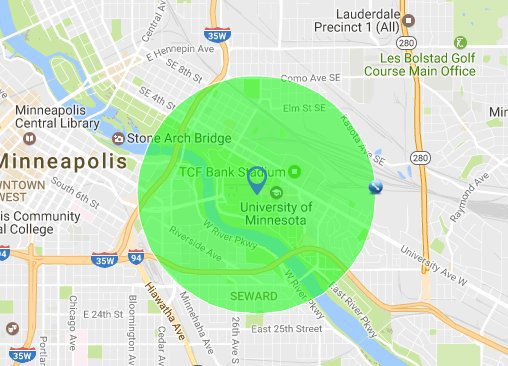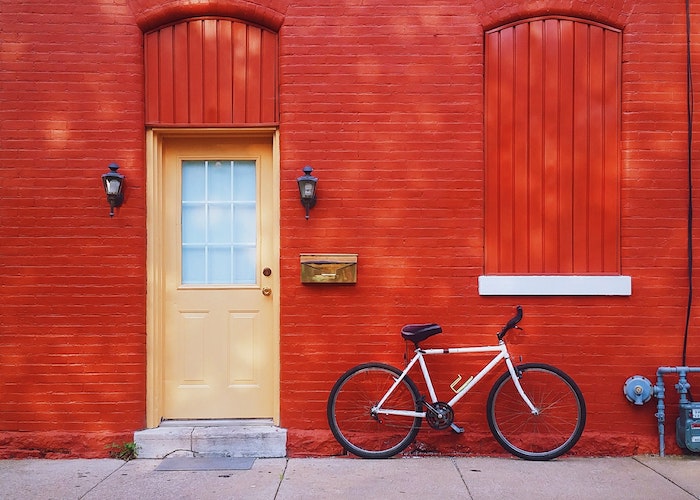The Transportation Solution That Could Save You $100,000 Over A Decade

One of the fun things about living in a college neighborhood is getting to see all of the different modes of transportation college kids use to get themselves around town. If you’ve never spent time in a college neighborhood as an adult, take a weekend afternoon and just hang out in one for a bit. I promise that you’ll never see so many creative ways to get yourself from Point A to Point B. Folks travel around on skateboards. Scooters. Rollerblades. Basically anything with wheels. These college kids are masters at figuring out how to get around a city quickly, cheaply, and efficiently.
Non-car based modes of transport that go beyond walking are totally normal in college areas, but seem oddly out of place in many “adult” neighborhoods. I know that, when I lived in neighborhoods populated primarily by young professionals, I saw far fewer people using bikes as a primary mode of transportation. In even fancier neighborhoods, you’ll probably rarely catch a full-fledged adult biking as a means of commuting.
An even smaller amount of people use what I’d deem to be “alternative” modes of transportation. These weird modes of transportation — things like skateboards, scooters, rollerblades, and other non-motorized wheel-based forms of transport — are actually pretty common on a college campus. They’re not quite enough to be used as a sole form of transportation in themselves, but they do a great job of handling trips between one and two miles, and connecting people to bigger forms of transportation.
These alternative modes essentially help to solve the Last Mile Problem. In the world of mass transit, the Last Mile Problem — sometimes referred to as the First Mile Problem — refers to the challenge of getting folks from their homes to a transportation hub, and vice-versa. Think of things like train stations or major bus stops. Each of these transit hubs has a sort of zone of influence around them. Generally, that zone stretches out about 1/4 to 1/2 of a mile. Take a look here:

That green circle is about the limit that a regular person will walk to get to a train station or bus stop. Any further, and most people will likely opt for a different mode of transportation — most likely their car. It’s faster to drive, of course. But it’s also expensive, worse for your health, and terrible for the planet.
But college kids, by adopting these alternative modes of transportation, are showing us that the Last Mile Problem can be solved pretty easily and cheaply, if we’re willing to think a little bit outside the box. By being willing to use alternative modes of transport to get to mass transit, that green circle can be extended quite a bit. I’d say by a mile at least. Take a look at how much more space that extra half mile can draw:

With major transit stops spread out throughout most cities, almost anyone should be able to quickly commute to a transit hub. And the savings in solving this last mile problem are pretty big. According to one study, the average person saves $812 per month by making the switch to public transit for their daily commute.
The Last Mile Problem In Action
My own living situation is a great example of the Last Mile Problem. I have a bus stop just a block from my house, and that’s what I typically use to get to work in the winter, or if it’s pouring rain. Buses, however, are bumpy, and take a little bit longer. I much prefer the luxury of a train. The only problem? My nearest train station is approximately 1.3 miles from my house. That’s about a 25-minute walk. Short enough that I could make the walk if I wanted to, but far enough away that I probably won’t do it.
And here is the problem of the last mile. This train station that can take you basically anywhere in the city for just $2 (and even less for me, because I have a subsidized pass giving me unlimited rides) is so close, yet so far. Faced with the decision of figuring out how to get to that train station or just driving to my destination, I’d probably just opt to drive.
But the amazing thing is that, by using a self-powered mode of transport with a wheel, I can basically cut my travel time down by half or more. Instead of a 25-minute walk to that train station, wheeling my way over there might only take me 10 minutes. Suddenly, that far-off transit hub isn’t so far away. And I get the added health benefits of using my own body to propel me to my destination.
Alternative Modes Of Last Mile Transportation
There are so many ways to bridge that last mile beyond just walking or using a traditional bike. At the outset, I’d like to note that, while a traditional bike is probably the most obvious form of last mile transit, I’ve always thought of it more as a primary mode of transportation akin to a car. You can bike miles and miles very quickly. So when I think about last mile transit, I’m thinking more in terms of methods of transportation that you can’t really sustain over long distances. These are basically methods that you’re using solely as a means to get yourself to another form of transit.
And, as much as I love biking, I’ve always preferred more compact modes of transport when I’m commuting. I’ve always hated having to bring my bike onto a train or bus. I much prefer being able to just walk onto it without having to think about anything.
With that out of the way, here are some alternative modes of transportation that I’ve been observing in my neighborhood that are helping to bridge that last mile:
Bike Share Systems
Without a doubt, bike share systems are my favorite mode of last mile transport. I’ve written before about what a terrific form of infrastructure these systems are for cities. Place a few bike share stations in strategic locations and suddenly, you’ve created an entire form of mass transit based solely around the bike. They also have the added benefit of normalizing biking. When biking seems normal, more people are apt to do it.
In addition, bike share systems are super cost-effective. For someone like me, who uses them at least twice per day, my cost per ride comes out to just 26 cents per ride. And that’s assuming I only used them to commute to and from work. My actual cost per ride is much lower, considering that I use these bikes for pretty much any short distance trip I take.
You can see just how well bike share systems can bridge that last mile with my own situation. I have a bike share station just a block from my house. My closest train station has a bike share station right outside of it. By having these two stations, that far off train station becomes an 8-minute bike ride away. And I never have to worry about fumbling with my bike on the way out the door, getting my bike onto a crowded train, or locking it up when I get to work.
If you live in a city, seriously consider signing up for a bike share system. I promise, it’ll change the way you move around.
Skateboards
I’ve always thought of skateboards as a recreational vehicle, but as it turns out, they’re actually terrific modes of transport to help bridge that last mile.
Take the example of my brother. A few weeks ago, he came to visit me for my bachelor party weekend. His flight landed around lunch, leaving him with an afternoon of waiting until I was done with work. Instead of sitting around at a coffee shop, he hopped on his skateboard, did some Postmates deliveries, and then skated on over to my house in the evening.
What makes the skateboard such a great last mile tool is its compactness. All you need to do is pick it up and carry it with you. My brother brought his skateboard with him on the plane. The downside with skateboarding is that…you need to learn how to skateboard. I’ve tried to skateboard myself, but it’s not so easy for me, and I don’t think I’d be comfortable doing it in a street. (I did recently see a kid skateboarding using ski poles. Not quite sure if it was because he didn’t know how to skateboard or if it was faster, but an interesting move nonetheless.)
Scooters
When I talk about scooters, I’m referring to the kick scooters that you might see kids using. This is a surprisingly effective mode of transportation that’s about twice as fast as walking. I should know. Back when I graduated college, I moved back home, and needed a way to get myself around town a little bit quicker. One day, I spotted an old Razor scooter I had sitting around in my house, and thought I’d try using it in order to get to the subway a little bit faster.
Turns out, those kick scooters are awesome, if you can just ignore how goofy you might look. My nearest subway stop was about a 20-minute walk away. By using a kick scooter, I reduced that to a mere 10-minute scoot.
Like a skateboard, scooters are super compact. All you need to do is fold it up and hold it. My scooter even had a strap, allowing me to sling it over my shoulder like a bag. It was basically no work to carry it onto a train.
And the nice thing about scootering is that it takes no skill; most people can pick it up immediately. Even learning how to ride a bike takes more time than figuring out how to use a scooter. If you’re thinking of scootering, you can grab a scooter on Amazon or Craigslist for as little as $25. (Those of you who are more hardcore will probably want to opt for an adult scooter with bigger wheels. I’ve personally used a kid’s scooter without any problems.)
(For further reading, check out this post on scooter commuting in the DC area. Interesting stuff.)
Rollerblading
I’ve seen a bunch of college kids rollerblading to class as well. When you think about it, rollerblading is a terrific way to bridge that last mile. You’re effectively putting wheels on your feet. When you get to your destination, all you need to do is take those rollerblades off and go back to regular shoes. Seems like an interesting way to move around, if you know how to rollerblade.
How Much Is That Last Mile Worth?
Think outside the box, and you can open up the entire world of mass transit to you. If you’re fortunate enough to live in a city with good mass transit, any transit station within a mile or two of you can now become accessible, if you’re willing to use multi-modal transit options to bridge that last mile.
So, since this is a personal finance blog, what we probably care about is how much that last mile is worth. Recent estimates suggest that a person can save an average of $9,738 per year by opting for mass transit over a car. What this means is that, if you’re not using mass transit because you think it’s too far from you, you could be leaving thousands of dollars per year on the table.
How much are you missing out on? $9,738 per year comes out to $97,380 over a decade. And that’s assuming we don’t invest that surplus savings. If we invest it, that $9,738 comes can turn into about $143,962 over a decade. That’s good enough to generate $5,758 per year for the rest of your life! All that just from spending $75 or so per year on a bike share system, depending on the city you live in. Or dropping $25 on a scooter. And don’t forget the health benefits and other external societal benefits that come along with not using your car.
Financial Panther is a lawyer who paid off $87,000 worth of student loans in just 2.5 years by choosing not to live like a big shot lawyer. If you’re interested in following his journey, you can visit his blog, Financial Panther, where he writes about personal finance, crushing debt, financial independence, and side hustling using the sharing economy. Follow him on Twitter here.
Image via Unsplash




